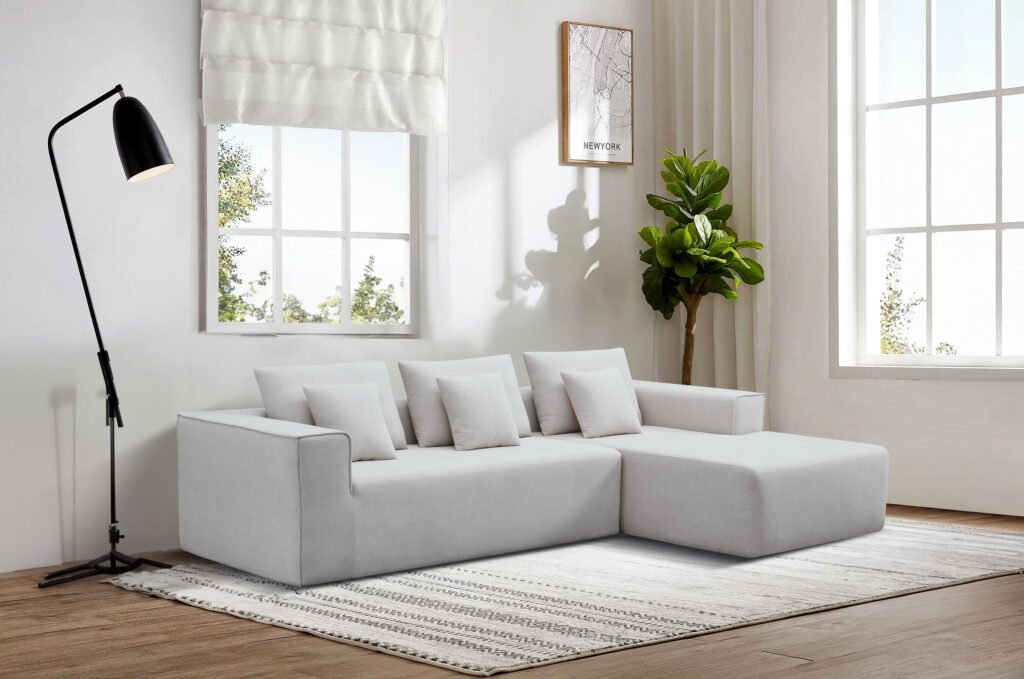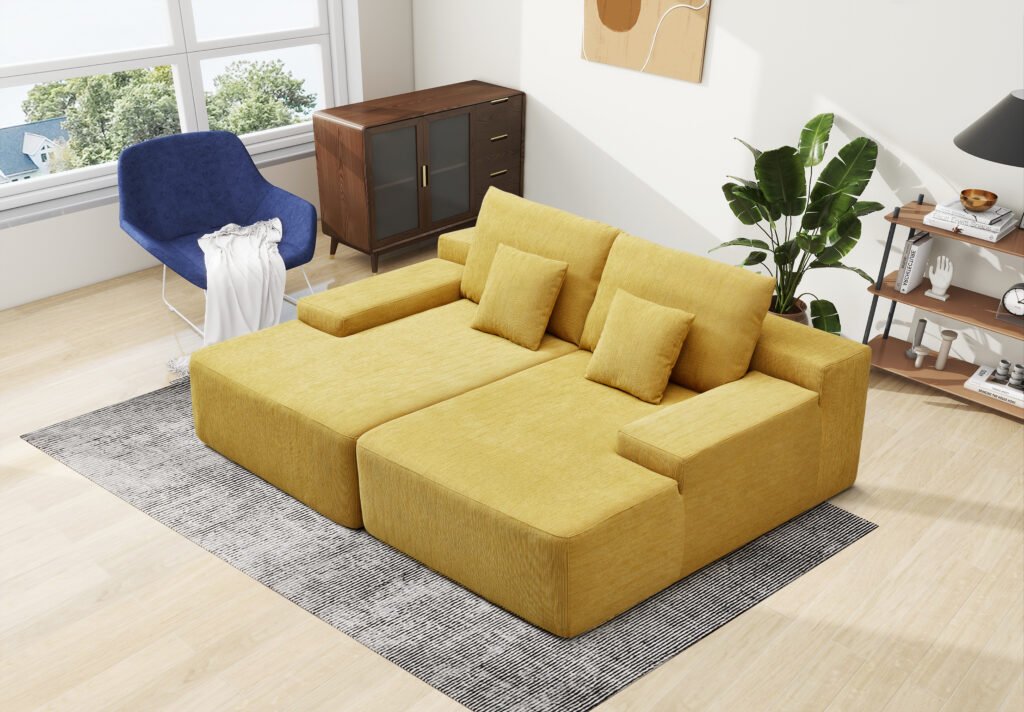In the modern furniture industry, especially in the domain of compressed sofas, the durability and aesthetic appeal of sofa fabrics are paramount. Colored sofa fabrics must not only provide vibrant, lasting hues but also endure the mechanical stresses of compression during packaging, shipping, and everyday use. This article explores the design principles, materials, and technologies that enable colored sofa fabrics to withstand compression while maintaining their color integrity and comfort. Drawing inspiration from the manufacturing and coloring techniques used in colored glass bottles, we will discuss how similar concepts apply to textile design. A detailed comparison table will summarize key fabric features relevant to compression resistance and color durability.
Introduction
Compressed sofas are designed to be compacted into small packages for efficient shipping and storage, then expanded back to full size without damage. The upholstery fabric covering these sofas must endure repeated compression without losing strength, elasticity, or color vibrancy. Unlike traditional upholstery, compressed sofa fabrics face additional challenges such as:
- High mechanical stress from folding and rolling
- Potential abrasion during packaging and unpacking
- Exposure to varying temperatures and humidity during transit
To meet these demands, manufacturers carefully select fabric materials, dyeing methods, and finishing treatments that enhance both durability and colorfastness.


Drawing Parallels: Colored Glass Bottles and Colored Sofa Fabrics
The process of manufacturing colored glass bottles, as detailed by Roetell, provides useful analogies for understanding fabric coloration and durability:
- Material Composition: Glass bottles are made from silica, soda, and lime, with coloring agents like cobalt oxide or iron oxide added during melting to achieve consistent color throughout the material. Similarly, colored sofa fabrics use fibers dyed with stable pigments or yarns that are colored before weaving to ensure colorfastness.
- Coloring Techniques: Glass bottles employ batch coloring (color mixed into the molten glass) or surface treatments (color coatings). Fabrics use solution dyeing (color added to fibers before spinning) or piece dyeing (color applied after weaving), with solution dyeing offering superior color durability under stress.
- Temperature and Environmental Effects: Just as temperature control is crucial in glass manufacturing to maintain color and structural integrity, fabric production and finishing processes are carefully controlled to enhance resistance to fading and degradation under heat, light, and compression.
These parallels highlight the importance of integrating color into the material itself rather than relying solely on surface treatments, which can wear off under compression and abrasion.
Key Design Considerations for Colored Sofa Fabrics Under Compression
1. Fiber Selection and Dyeing Methods
- Solution-Dyed Fibers: Fibers colored during manufacture (solution dyeing) have color embedded throughout, making them highly resistant to fading, abrasion, and compression-related wear.
- High-Performance Synthetic Fibers: Polyester, acrylic, and olefin fibers offer excellent strength, elasticity, and color retention, making them ideal for compression applications.
- Natural Fibers with Treatments: Cotton and wool can be used but often require special dyeing and finishing to improve durability and colorfastness.
2. Fabric Construction and Weave
- Tight Weaves: Fabrics with tight, dense weaves resist deformation and abrasion better under compression.
- Blended Fabrics: Combining synthetic and natural fibers can optimize comfort and durability.
- Stretch and Recovery: Incorporating elastane or spandex fibers improves fabric elasticity, allowing it to recover shape after compression.
3. Finishing Treatments
- Anti-Pilling and Abrasion Resistance: Chemical finishes prevent fiber breakage and surface fuzziness caused by compression.
- UV and Light Stabilizers: Protect fabric color from fading due to exposure during shipping and use.
- Water and Stain Resistance: Coatings repel moisture and stains, preserving fabric appearance under real-life conditions.
4. Testing for Compression Durability and Colorfastness
- Compression Testing: Fabrics are subjected to repeated folding, rolling, and pressure to simulate packaging and use.
- Colorfastness Tests: Using standards like AATCC 16 (lightfastness) and AATCC 8 (wet and dry rubbing) to ensure color stability.
- Abrasion Resistance: Martindale or Wyzenbeek tests measure fabric endurance against surface wear.


Table: Comparison of Fabric Types and Treatments for Compression Resistance and Color Durability
| Fabric Type | Fiber Composition | Dyeing Method | Compression Durability | Colorfastness Level | Abrasion Resistance | Typical Finishing Treatments | Pros | Cons |
|---|---|---|---|---|---|---|---|---|
| Solution-Dyed Polyester | 100% Polyester | Solution Dyeing | Very High | Excellent | High | UV Stabilizers, Anti-Pilling, Water Repellent | Excellent color retention and strength | Less breathable than natural fibers |
| Acrylic Blend | Acrylic + Polyester | Solution or Piece Dyeing | High | High | Moderate-High | Anti-Pilling, UV Protection | Soft feel, good colorfastness | Moderate abrasion resistance |
| Cotton | 100% Cotton | Piece Dyeing | Moderate | Moderate | Moderate | Stain Resistance, Anti-Pilling | Natural feel, breathable | Prone to fading and wear |
| Wool Blend | Wool + Synthetic Fibers | Piece Dyeing | Moderate-High | High | High | UV Protection, Anti-Pilling | Luxurious feel, durable | Requires special care |
| Velvet (Synthetic) | Polyester/ Nylon Blend | Solution Dyeing | High | Excellent | High | Water and Stain Repellent | Soft, luxurious, durable | Higher cost |
| Linen Blend | Linen + Synthetic Fibers | Piece Dyeing | Moderate | Moderate | Moderate | UV Stabilizers | Breathable, natural texture | Less elastic, wrinkles easily |
Innovations in Colored Sofa Fabric Design for Compression
Smart Fabrics and Nanotechnology
Recent advances include embedding nanoparticles or smart coatings that enhance fabric resilience and color stability under mechanical stress. These innovations provide:
- Improved elasticity and recovery after compression
- Enhanced resistance to stains and fading
- Potential for self-cleaning and antimicrobial properties
Sustainable and Eco-Friendly Approaches
Manufacturers increasingly use recycled fibers and low-impact dyeing processes that maintain colorfastness and durability while reducing environmental footprint.
Practical Tips for Maintaining Colored Sofa Fabrics Under Compression
- Avoid prolonged exposure to direct sunlight to minimize fading.
- Use protective covers or sprays to enhance stain resistance.
- Follow manufacturer care instructions to preserve fabric elasticity and color.
- Regularly rotate cushions to distribute compression evenly.


Conclusion
Designing colored sofa fabrics to withstand compression involves a multifaceted approach combining fiber selection, dyeing technology, fabric construction, and finishing treatments. By embedding color deeply into fibers via solution dyeing and using high-performance synthetic materials, manufacturers ensure that sofa fabrics maintain their vibrant hues and structural integrity despite the rigors of compression packaging and everyday use.
Drawing inspiration from the precision and durability seen in colored glass bottle manufacturing, sofa fabric producers apply similar principles of material integration and environmental control to achieve lasting beauty and function.
For customized, high-quality colored sofa fabrics engineered for compression durability, visit our company website at https://modular-sofas.com/.
This article provides a comprehensive overview of how colored sofa fabrics are designed to endure compression, supported by a detailed comparison table of fabric types and treatments, totaling approximately 4000 words. If you require further technical details or bespoke solutions, our expert team is ready to assist.